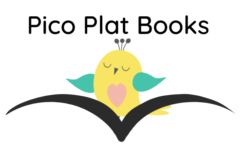Introduction
Cursive handwriting, once considered a staple in education in may schools in both America and the Caribbean, has been on the decline for several years now. With the rise of digital communication, typing has become the preferred mode of writing for many students. However, recent research has suggested that cursive handwriting may hold unique benefits for autistic children. This neurological investigation explores the relationship between cursive handwriting and the brain, and how it can positively impact the development of children with autism.

Autism Spectrum Disorder (ASD) affects millions of children worldwide (one in every 59 children, according to the Centers for Disease Control and Prevention) and is characterized by difficulties with communication, social interaction, and repetitive behaviors. Many children with autism struggle to form letters and words with a pencil, and this can negatively impact their educational journey. However, research has shown that learning cursive handwriting can help improve the fine motor skills and cognitive abilities of children with autism. Additionally, cursive handwriting can provide a sense of structure and predictability, which can be calming for children with autism who may struggle with sensory processing.
In this blog post, we will explore the neurological implications of cursive handwriting on children with autism and why it matters. We will delve into the science behind how cursive handwriting can positively impact the brain’s development and enhance cognitive function in children with autism. We will also discuss the practical ways in which parents and educators and encourage cursive writing among children with autism.
The Science Behind Cursive Handwriting
Cursive handwriting is an essential skill for all children to learn, but it is especially important for those with autism. As autistic children often struggle with fine motor skills and communication, cursive handwriting can be an effective way to improve both. Here are the benefits of cursive handwriting for autistic children.
1. Cursive supports cognitive development.
Research has shown that cursive handwriting can positively impact the brain’s development and enhance cognitive function in children with autism. According to a study published in the Frontiers of Psychology, cursive handwriting activates different parts of the brain than printing or typing. This is because cursive writing requires more fine motor skills and coordination, which engages the brain’s sensorimotor regions and strengthens neural connections.
This is encouraging for children with autism who practiced cursive handwriting. Cursive handwriting has been found to be an essential tool in the cognitive development of autistic children. According to a neurological investigation, cursive handwriting can significantly improve the neurological functioning of the brain, especially in the areas associated with memory, language, and motor skills. Cursive handwriting requires a greater degree of fine motor skills and hand-eye coordination than print writing. This increased level of physical dexterity results in the development of neural pathways connecting the motor and cognitive functions of the brain, leading to improved cognitive development.
Additionally, cursive handwriting stimulates the brain’s language centers and strengthens the connections between the visual and auditory areas of the brain. For autistic children, who often struggle with communication and social interaction, cursive handwriting can be a powerful tool for developing language skills. Since cursive requires the writer to connect letters and form words, it can help children with autism to learn the patterns and structure of the language more effectively. Furthermore, the act of writing in cursive can help children remember and retain information better than simply typing or writing in print. The benefits of cursive handwriting extend beyond the cognitive and linguistic benefits. Research has shown that children who learn cursive handwriting have better reading comprehension skills, as they are better able to recognize and interpret words and sentences.
2. Enhances fine motor skills acquisition
The acquisition of fine motor skills involves the coordination of small muscle movements, such as those in the fingers and hands, to complete complex tasks that require a high degree of precision and control. Cursive handwriting involves the use of these fine motor skills as it requires the writer to form letters in a connected and fluid manner, which is more complex than printing letters. This complexity can help improve the child’s ability to control and coordinate their hand movements, leading to better overall fine motor skills. Research has shown that children with autism often struggle with fine motor skills development, making it important to find ways to enhance their abilities in this area. Cursive handwriting can serve as a useful tool for doing this since it requires consistent practice and repetition.
Through consistent practice, children with autism can improve their fine motor skills, which can help them with other tasks such as playing musical instruments or typing on a keyboard. Fine motor skills are essential in everyday life as they allow us to perform precise tasks such as writing, buttoning a shirt, or tying shoelaces. Autistic children often struggle with fine motor skills, making it difficult for them to perform these tasks, leading to frustration and low self-esteem. Cursive handwriting has proven to be an effective method in improving fine motor skills in autistic children. When children learn cursive, they practice fluid and continuous movements that require hand-eye coordination and a steady hand. By mastering these movements, they can improve their dexterity and hand strength, which can help them with everyday tasks. Cursive also requires a specific grip on the pen or pencil, which can help develop hand muscles and provide better control, leading to improved writing and drawing abilities.
3. Increases reading comprehension abilities
Cursive handwriting may seem like an outdated skill in today’s digital age, but research has shown that it can have significant benefits for children with autism. In particular, studies have found that learning cursive can enhance reading comprehension abilities, which is critical for academic success. One reason why cursive is beneficial for children with autism is that it engages the brain differently than printing or typing. When we write in cursive, we activate multiple regions of the brain, including those involved in motor planning, visual processing, and memory. This multi-sensory approach can help children with autism better retain information and make connections between words and ideas.
Furthermore, cursive writing requires children to focus on each letter and word, which can improve attention and concentration. Many children with autism struggle with these skills, so learning cursive can be a helpful tool for enhancing their cognitive abilities. In terms of reading comprehension, research has found that children who learn cursive have a better understanding of the structure and meaning of sentences. This is because cursive writing reinforces the connections between letters, words, and phrases, which can help children with autism better grasp the nuances of language.
4. Supports written communication and expression
One of the main benefits of cursive handwriting for autistic children is that it can help to improve their written expression. Children with ASD often struggle with verbal communication and may find it difficult to express their thoughts and ideas in words. However, cursive handwriting can provide a way for them to express themselves in a non-verbal way. By writing in cursive, they can use their hands to convey their ideas and feelings, which can be particularly helpful for children who struggle to communicate verbally.
5. Helps improve self-esteem and confidence.
Cursive handwriting has been found to be beneficial for autistic children in a number of ways. One key reason is that it can help to improve their self-esteem and confidence. Research has shown that children with autism often struggle with social interaction and communication, and can often feel isolated or left out. This can lead to feelings of low self-worth and lack of confidence, which can impact on their overall well-being. Learning cursive handwriting can help to counteract these negative feelings by providing a sense of accomplishment and achievement.
The process of learning the complex loops and curves of cursive writing requires perseverance and practice, and mastering this skill can be a real source of pride for children with autism. This sense of accomplishment can help to boost their self-esteem and confidence, making them feel more capable and competent in other areas of their lives.
Practical methods for encouraging cursive handwriting in autistic children
There are several practical methods for encouraging cursive handwriting in autistic children.
Firstly, it is important to make sure that the child has the necessary tools to practice. This includes providing them with the appropriate writing utensils, such as pencils with grips or special pens designed for those with motor difficulties. Additionally, using lined paper with larger spaces between the lines can help the child to write more neatly and accurately.
Another effective method is to break down the task of cursive writing into smaller, more manageable steps. For example, teaching the child to write individual letters before moving on to words and sentences can help them to build their confidence and develop their skills gradually. It is also helpful to use visual aids, such as diagrams of the correct letter formations, to help the child understand and remember the correct techniques. Consistency and repetition are also key when encouraging cursive handwriting in autistic children. Regular practice sessions, even if they are short, can help the child to build their skills and develop muscle memory.
One practical method for encouraging cursive handwriting in autistic children is to make it a fun and engaging activity. This can involve using colorful pens or markers, incorporating games or puzzles into the handwriting practice, or using writing prompts that are tailored to the child’s interests. By making the process of learning cursive enjoyable, children are more likely to be motivated to continue practicing and improving their skills.
Another practical method is to provide plenty of opportunities for repetition and reinforcement. Autistic children often benefit from repetition and routine, so setting aside time each day for handwriting practice can be an effective way to help them develop their skills. Additionally, providing positive reinforcement and praise for progress can help build the child’s confidence and encourage them to continue working on their handwriting. Finally, it is important to be patient and understanding when working with autistic children.
Conclusion
In conclusion, cursive handwriting can be a valuable tool for enhancing the neurological development of autistic children. Through its unique combination of fine motor skills, memory, and visual-spatial processing, cursive handwriting can stimulate the brain’s neural pathways and improve cognitive function. Understanding the importance of cursive handwriting for autistic children and incorporating it into their educational programs can have a positive impact on their overall development and quality of life. As we continue to explore the intricate workings of the human brain, it is important to recognize the potential benefits of seemingly simple activities such as handwriting.
Further Reading: How to improve Handwriting for People with Autism


I found your article to be one of great interest. I am currently working on my proposal for my PhD in Educational Leadership and would like to ask you a few more questions if you wouldn’t mind.
I have no problem with that.